| Revision as of 04:11, 28 November 2015 editLor (talk | contribs)Extended confirmed users, Pending changes reviewers, Rollbackers8,556 editsm Reverted edits by Scarlette_erin_reads (talk) (HG) (3.1.18)← Previous edit | Revision as of 17:16, 29 November 2015 edit undo24.237.109.124 (talk) This is a good faith edit. Please lift my ban and please overlook my flaws. One cannot expect any user to be a figurative "angel".Next edit → | ||
| Line 73: | Line 73: | ||
| |A sleeveless garment similar to a T-shirt. | |A sleeveless garment similar to a T-shirt. | ||
| | | | | ||
| *Camisole | |||
| *A-shirt (guinea tee, ], ], ]; '''UK''': ]) – tight-fitting with large armholes and a neckline that can extend as far as mid-chest. | *A-shirt (guinea tee, ], ], ]; '''UK''': ]) – tight-fitting with large armholes and a neckline that can extend as far as mid-chest. | ||
| |- valign=top | |- valign=top | ||
Revision as of 17:16, 29 November 2015
"Underwear" redirects here. For other uses, see Underwear (disambiguation). "Intimate apparel" redirects here. For the play, see Intimate Apparel (play).


Undergarments are items of clothing worn beneath outer clothes, usually in direct contact with the skin, although they may comprise more than a single layer. They serve to keep outer garments from being soiled or damaged by bodily excretions, to lessen the friction of outerwear against the skin, to shape the body, and to provide concealment or support for parts of it. In cold weather, long underwear is sometimes worn to provide additional warmth. Special types of undergarments have religious significance. Some items of clothing are designed as undergarments, while others, such as T-shirts and certain types of shorts, are appropriate both as undergarments and as outer clothing. If made of suitable material or textile, some undergarments can serve as nightwear or swimsuits, and some are intended for sexual attraction or visual appeal.
Undergarments are generally of two types, those that are worn to cover the torso and those that are worn to cover the waist and legs, although there are also garments which cover both. Different styles of undergarments are generally worn by females and males. Undergarments commonly worn by females today include bras and panties (known in the United Kingdom as knickers), while males often wear briefs, boxer briefs or boxer shorts. Items commonly worn by both sexes include T-shirts, sleeveless shirts (also called singlets or tank tops), bikini underwear, thongs, and G-strings.
Terminology
Undergarments are known by a number of terms. Underclothes, underclothing and underwear are formal terms, while undergarments may be more casually called, in Australia, Reg Grundys (rhyming slang for undies) and Reginalds, and, in the United Kingdom, smalls (from the earlier smallclothes) and (historically) unmentionables. In the United States, women's underwear may be known as delicates due to the recommended washing machine cycle or because they are, simply put, delicate.
Women's undergarments collectively are called lingerie. They also are called intimate clothing and intimates.
An undershirt (vest in the United Kingdom) is a piece of underwear covering the torso, while underpants (often pants in the United Kingdom), drawers, and shorts cover the genitals and buttocks. Terms for specific undergarments are shown in the table below.
Not wearing underpants under outer clothing is known in American slang as freeballing for men and as going commando for either sex. The act of a woman not wearing a bra is sometimes referred to as freeboobing.
Function
Underwear is worn for a variety of reasons. They keep outer garments from being soiled by perspiration, urine, semen, menstrual blood and feces. Women's brassieres provide support for the breasts, and men's briefs serve the same function for the male genitalia. A corset may be worn as a foundation garment to alter a woman's body shape. For additional support and protection when playing sports, men often wear more tightly fitting underwear, including jockstraps and jockstraps with cup pocket and protective cup. Women may wear sports bras which provide greater support, thus increasing comfort and reducing the chance of damage to the ligaments of the chest during high-impact exercises such as jogging.
In cold climates, underwear may constitute an additional layer of clothing helping to keep the wearer warm. Underwear may also be used to preserve the wearer's modesty – for instance, some women wear camisoles and slips (petticoats) under clothes that are sheer. Conversely, some types of underwear can be worn for sexual titillation, such as edible underwear, crotchless panties and thongs.
Some items of clothing are designed exclusively as underwear, while others such as T-shirts and certain types of shorts are suitable both as underwear and as outer clothing. The suitability of underwear as outer clothing is, apart from the indoor or outdoor climate, largely dependent on societal norms, fashion and the requirements of the law. If made of suitable material, some underwear can serve as nightwear or swimsuits.
Religious functions
Undergarments can also have religious significance:
- Judaism. To conform with societal dress codes, the tallit katan is often worn beneath the shirt.
- Mormonism. Following their endowment in a temple, Mormons wear special temple garments which help them to remember the teachings of the temple.
- Sikhism. One of the five articles of faith (panj kakaar) worn by Sikh men and women is a certain style of underpants similar to boxer shorts and known as the kacchera.
- Zoroastrianism. Zoroastrians wear an undershirt called a Sedreh that is fastened with a sacred girdle around the waist known as a Kushti.
Fashions and trends
Not wearing underpants
Main article: Going commandoSome people choose not to wear any underpants, a practice sometimes referred to as "going commando", for comfort, to enable their outer garments (particularly those which are form-fitting) to look more flattering, to avoid creating a panty line, because they find it sexually exciting, or because they do not see any need for them.
Certain types of clothes, such as cycling shorts and kilts, are designed to be worn or are traditionally worn without underpants. This also applies for most clothes worn as nightwear and as swimwear.
Exposed underwear
See also: Sagging (fashion)Underwear is sometimes partly exposed for fashion reasons or to titillate. A woman may, for instance, allow the top of her brassiere to be visible from under her collar, or wear a see-through blouse over it. Some men wear T-shirts underneath partly or fully unbuttoned shirts.
A common style among young men is to allow the trousers to sag below the waist, thus revealing the waistband or a greater portion of whatever underwear the man is wearing. A woman wearing low-rise trousers may expose the upper rear portion of her thong underwear is said to display a "whale tail".
Types and styles
Common contemporary types and styles of undergarments are listed in the table below.
| Type | Other names | Information | Varieties |
|---|---|---|---|
| Worn by both sexes | |||
| Whole body | |||
Long underwear
|
Long johns, long handles | A two-piece undergarment worn during cold weather consisting of a shirt with sleeves extending to the wrists and leggings/pants/trousers with pant legs reaching down to the ankles. |
|
| Upper body | |||
Sleeveless shirt
|
Tank top, wife beater, singlet | A sleeveless garment similar to a T-shirt. |
|
T-shirt
|
Tee | A garment covering a person's torso which is usually made without buttons, pockets or a collar, and can have short or long sleeves. It is worn by pulling it over the head. It is often worn as an outer garment, especially in informal situations. |
|
| Lower body | |||
Bikini underwear
|
Usually worn with the waistband lower than the wearer's waist, and often at the hips, with the leg bands ending at the groin. Men's bikini briefs normally have no fly. |
| |
G-string
|
Gee-string, G string | A type of thong consisting of a narrow piece of material that covers or holds the genitals, passes between the buttocks, and is attached to a string around the hips. The smallest of the underpants. | |
| Tanga |
A type of thong which is wider than a G-string and fairly wide in the front, more like the wide V of a traditional brief. Fit tends to be more comfortable than that of a plain thong or G-string and is often more embellished. | ||
Thong
|
Has a narrow strip of material along the centre of the garment's rear which sits between the wearer's buttocks and connects the front or pouch to the waistband behind the wearer. Thongs are sometimes worn to reduce "panty lines" when wearing tightly fitting trousers. | ||
| Worn by women | |||
| Upper body | |||
Brassiere
|
Bra | Usually consists of two cups for the breasts, a centre panel (gore), a band running around the torso under the bust, and a shoulder strap for each side. |
|
| Lower body | |||
Boy shorts
|
Booty shorts, boyleg briefs, boy short panties, boys' cut shorts, boyshorts, shorties | A type of panties with sides that extend lower down the hips, similar to men's briefs. | |
Tap pants
|
Side-cut shorts; Dance shorts; French knickers | A type of shorts modeled after what was worn by tap dancers. | |
Panties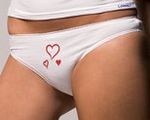
|
UK: Knickers | These usually have an elastic waistband, a crotch to cover the genital area which is usually lined with absorbent material such as cotton, and a pair of leg openings which are often also elasticized. They either have very short or no leg sections. |
|
| Worn by men | |||
| Lower body | |||
Boxer briefs
|
Trunks | These are similar in style to boxer shorts, but are generally shorter and form-fitting like briefs. |
|
| Midway briefs | long leg boxer briefs, boxerjocks | These are similar in style to boxer briefs, which are longer in the legs from the waist to the knees and tighter-fitting, like briefs. |
|
Boxer shorts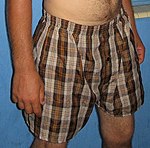
|
Boxers | These have an elasticized waistband that is at or near the wearer's waist, while the leg sections are fairly loose and extend to the mid-thigh. There is usually a fly, either with or without buttons. The waistbands of boxer shorts are usually wider than those of briefs, and often bear the brand name of the manufacturer. Boxer shorts with colourful patterns, pictures of cartoon characters, sports team logos and slogans are readily available. |
|
Briefs
|
UK': Y-fronts US: jockey shorts |
These have an elasticized waistband at or near the wearer's waist, and leg sections that end at or near the groin. |
|
Jockstrap
|
Athletic supporter, jock, strap, supporter | Consists of an elastic waistband with a support pouch for the genitalia and two elastic straps affixed to the base of the pouch and to the left and right sides of the waistband at the hip. In some varieties, the pouch may be fitted with a pocket to hold an impact-resistant cup to protect the genitals from injury. A jockstrap is different from a dance belt that a male dancer wears. |
|
| Religious Under Clothing | |||
| Whole body | |||
Temple Garments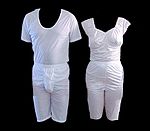
|
This kind of underwear is worn by Mormons. | ||
| Upper body | |||
| Tallit katan | |||
| Lower body | |||
Kachchhera
|
|||
Industry


Market
In January 2008 it was reported that, according to market research firm Mintel, the men's underwear market in the UK was worth £674 million, and volume sales of men's underpants rose by 24% between 2000 and 2005. British manufacturers and retailers claim that most British men prefer "trunks", or short boxer briefs. The director of menswear of major British retailer Marks & Spencer (M&S), which sells 40 million pairs of men's underpants a year, was quoted as saying that while boxer shorts were still the most popular at M&S, demand was easing off in favour of hipster trunks similar in design to the swimming trunks worn by actor Daniel Craig in the James Bond film Casino Royale (2006).
Designers and retailers
A number of major designer labels are renowned for their underwear collections, including Calvin Klein, Dolce & Gabbana and La Perla. Likewise, specialist underwear brands are constantly emerging, such as Andrew Christian, 2(x)ist, C-IN2, Ergowear, Ginch Gonch, Kitts, Lord, Obviously, and Papi.
Specialist retailers of underwear include high street stores La Senza (Canada), Agent Provocateur (UK), Victoria's Secret (USA), and GapBody, the lingerie division of the Gap established in 1998 (USA). Online retailer, Freshpair, emerged in 2000 in New York and in 2008 Abercrombie & Fitch opened a new chain of stores, Gilly Hicks, to compete with other underwear retailers.
History
Ancient history
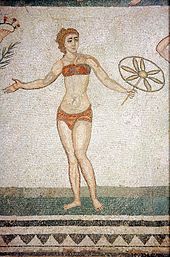
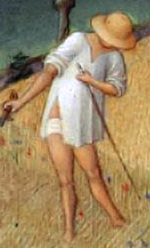
The loincloth is the simplest form of underwear; it was probably the first undergarment worn by human beings. In warmer climates the loincloth was often the only clothing worn (effectively making it an outer garment rather than an undergarment), as was doubtless its origin, but in colder regions the loincloth often formed the basis of a person's clothing and was covered by other garments. In most ancient civilizations, this was the only undergarment available.
A loincloth may take three major forms. The first, and simplest, is simply a long strip of material which is passed between the legs and then around the waist. Archaeologists have found the remains of such loincloths made of leather dating back 7,000 years. The ancient Hawaiian malo was of this form, as are several styles of the Japanese fundoshi. Another form is usually called a cache-sexe: a triangle of cloth is provided with strings or loops, which are used to fasten the triangle between the legs and over the genitals. Egyptian king Tutankhamun (1341 BC – 1323 BC) was found buried with numerous linen loincloths of this style. An alternate form is more skirt-like: a cloth is wrapped around the hips several times and then fastened with a girdle.
Men are said to have worn loincloths in ancient Greece and Rome, though it is unclear whether Greek women wore undergarments. There is some speculation that only slaves wore loincloths and that citizens did not wear undergarments beneath their chitons. Mosaics of the Roman period indicate that women (primarily in an athletic context, whilst wearing nothing else) sometimes wore strophiae (breastcloths) or brassieres made of soft leather, along with subligacula which were either in the form of shorts or loincloths. Subligacula were also worn by men.
The fabric used for loincloths may have been wool, linen or a linsey-woolsey blend. Only the upper classes could have afforded imported silk.
The loincloth continues to be worn by people around the world – it is the traditional form of undergarment in many Asian societies, for example. In various, mainly tropical, cultures, the traditional male dress may still consist of only a single garment below the waist or even none at all, with underwear as optional, including the Far-Eastern dhoti and lungi, or the Scottish kilt.
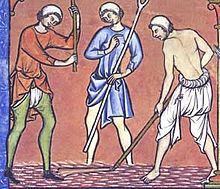
Middle Ages and Renaissance
In the Middle Ages, western men's underwear became looser fitting. The loincloth was replaced by loose, trouser-like clothing called braies, which the wearer stepped into and then laced or tied around the waist and legs at about mid-calf. Wealthier men often wore chausses as well, which only covered the legs. Braies were a type of trouser worn by Celtic and Germanic tribes in antiquity and by Europeans subsequently into the Middle Ages. In the later Middle Ages they were used exclusively as undergarments.
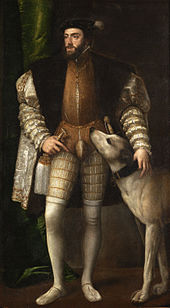
By the time of the Renaissance, braies had become shorter to accommodate longer styles of chausses. Chausses were also giving way to form-fitting hose, which covered the legs and feet. Fifteenth-century hose were often particolored, with each leg in a different-coloured fabric or even more than one colour on a leg. However, many types of braies, chausses and hose were not intended to be covered up by other clothing, so they were not actually underwear in the strict sense.
Braies were usually fitted with a front flap that was buttoned or tied closed. This codpiece allowed men to urinate without having to remove the braies completely. Codpieces were also worn with hose when very short doublets – vest- (UK: waistcoat-) like garments tied together in the front and worn under other clothing – were in fashion, as early forms of hose were open at the crotch. Henry VIII of England began padding his codpiece, which caused a spiralling trend of larger and larger codpieces that only ended by the end of the 16th century. It has been speculated that the King may have had the sexually transmitted disease syphilis, and his large codpiece may have included a bandage soaked in medication to relieve its symptoms. Henry VIII also wanted a healthy son and may have thought that projecting himself in this way would portray fertility. Codpieces were sometimes used as a pocket for holding small items.

Over the upper part of their bodies, both medieval men and women usually wore a close-fitting shirt-like garment called a chemise in France, or a smock or shift in England. The forerunner of the modern-day shirt, the chemise was tucked into a man's braies, under his outer clothing. Women wore a chemise underneath their gowns or robes, sometimes with petticoats over the chemise. Elaborately quilted petticoats might be displayed by a cut-away dress, in which case they served a skirt rather than an undergarment. During the 16th century, the farthingale was popular. This was a petticoat stiffened with reed or willow rods so that it stood out from a woman's body like a cone extending from the waist.
Corsets also began to be worn about this time. At first they were called pairs of bodies, which refers to a stiffened decorative bodice worn on top of another bodice stiffened with buckram, reeds, canes, whalebone or other materials. These were not the small-waisted, curved corsets familiar from the Victorian era, but straight-lined stays that flattened the bust.
There is a myth that Crusaders, worried about the fidelity of their wives, forced them to wear chastity belts. There is no reference, image, or surviving belt to support this story. Most historians of this period are of the view that a chastity belt was worn to prevent sexual assault and that the woman kept the key.
Men's braies and hose were eventually replaced by simple cotton, silk or linen drawers, which were usually knee-length trousers with a button flap in the front.
Medieval people wearing only tunics, without underpants, can be seen on works like a engraving by Pieter Bruegel the Elder, in the Très Riches Heures or in the Grimani Breviary.
In 2012, findings in Lengberg Castle showed that lace and linen brassiere-like garments, one of which greatly resembled the modern bra, date back to hundreds of years before it was thought to exist.
Enlightenment and Industrial Age
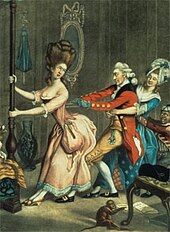
The invention of the spinning jenny machines and the cotton gin in the second half of the 18th century made cotton fabrics widely available. This allowed factories to mass-produce underwear, and for the first time, people began buying undergarments in stores rather than making them at home.
Women's stays of the 18th century were laced behind and drew the shoulders back to form a high, round bosom and erect posture. Coloured stays were popular. With the relaxed country styles of the end of the century, stays became shorter and were unboned or only lightly boned, and were now called corsets. As tight waists became fashionable in the 1820s, the corset was again boned and laced to form the figure. By the 1860s, a tiny ("wasp") waist came to be seen as a symbol of beauty, and the corsets were stiffened with whalebone or steel to accomplish this. Tight lacing of a corset sometimes led to a woman needing to retire to the fainting room. By the 1880s, the dress reform movement was campaigning against the pain and damage to internal organs and bones caused by tight lacing. Inez Gaches-Sarraute invented the "health corset", with a straight-fronted bust made to help support the wearer's muscles.
The corset was usually worn over a thin shirt-like shift of linen or cotton or muslin. Skirt styles became shorter and long drawers called pantalettes or pantaloons kept the legs covered. Pantalettes originated in France in the early 19th century, and quickly spread to Britain and America. Pantalettes were a form of leggings or long drawers. They could be one-piece or two separate garments, one for each leg, attached at the waist with buttons or laces. The crotch was left open for hygiene reasons.
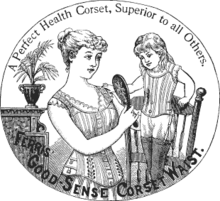
As skirts became fuller from the 1830s, women wore many petticoats to achieve a fashionable bell shape. By the 1850s, stiffened crinolines and later hoop skirts allowed ever wider skirts to be worn. The bustle, a frame or pad worn over the buttocks to enhance their shape, had been used off and on by women for two centuries, but reached the height of its popularity in the later 1880s, and went out of fashion for good in the 1890s. Women dressed in crinolines often wore drawers under them for modesty and warmth.
Another common undergarment of the late-19th century for men, women and children was the union suit. Invented in Utica, New York, and patented in 1868, this was a one-piece front-buttoning garment usually made of knitted material with sleeves extending to the wrists and legs down to the ankles. It had a buttoned flap (known colloquially as the "access hatch", "drop seat" or "fireman's flap") in the back to ease visits to the toilet. The union suit was the precursor of long johns, a two-piece garment consisting of a long-sleeved top and long pants possibly named after American boxer John L. Sullivan who wore a similar garment in the ring.
The jockstrap was invented in 1874, by C.F. Bennett of a Chicago sporting goods company, Sharp & Smith, to provide comfort and support for bicycle jockeys riding the cobblestone streets of Boston, Massachusetts. In 1897 Bennett's newly formed Bike Web Company patented and began mass-producing the Bike Jockey Strap.
1900s to 1920s
| This section needs additional citations for verification. Please help improve this article by adding citations to reliable sources in this section. Unsourced material may be challenged and removed. (January 2012) (Learn how and when to remove this message) |
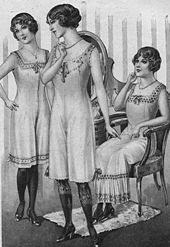

By the early 20th century, the mass-produced undergarment industry was booming, and competition forced producers to come up with all sorts of innovative and gimmicky designs to compete. The Hanes company emerged from this boom and quickly established itself as a top manufacturer of union suits, which were common until the 1930s. Textile technology continued to improve, and the time to make a single union suit dropped from days to minutes.
Meanwhile, designers of women's undergarments relaxed the corset. The invention of new, flexible but supportive materials allowed whalebone and steel bones to be removed. The emancipation or liberty bodice offered an alternative to constricting corsets, and in Australia and the UK the liberty bodice became a standard item for girls as well as women.
Men's underwear was also on the rise. Benjamin Joseph Clark, a migrant to Louisiana from New Jersey, opened a venture capitalist firm named Bossier in Bossier Parish. One product manufactured by his firm was tightly fitting boxers that resembled modern underwear. Though the company was bankrupt by the early 1900s, it had some impact on men's underwear design.
Underwear advertising first made an appearance in the 1910s. The first underwear print advertisement in the US appeared in The Saturday Evening Post in 1911 and featured oil paintings by J. C. Leyendecker of the "Kenosha Klosed Krotch". Early underwear advertisements emphasised durability and comfort, and fashion was not regarded as a selling point.
By the end of the 1910s, Chalmers Knitting Company split the union suit into upper and lower sections, effectively inventing the modern undershirt and drawers. Women wore lacier versions of this basic duo known as the camisole and tap pants.

In 1912, the US had its first professional underwear designer. Lindsay "Layneau" Boudreaux, a French immigrant, established the short-lived panty company Layneau. Though her company closed within one year, it had a significant impact on many levels. Boudreaux showed the world that an American woman could establish and run a company, and she also caused a revolution in the underwear industry.
In 1913, a New York socialite named Mary Phelps Jacob created the first modern brassiere by tying two handkerchiefs together with ribbon. Jacob's original intention was to cover the whalebone sticking out of her corset, which was visible through her sheer dress. Jacob began making brassieres for her family and friends, and news of the garment soon spread by word of mouth. By 1914, Jacob had a patent for her design and was marketing it throughout the US. Although women had worn brassiere-like garments in years past, Jacob's was the first to be successfully marketed and widely adopted.
By the end of the decade, trouser-like "bloomers", which were popularized by Amelia Jenks Bloomer (1818–1894) but invented by Elizabeth Smith Miller, gained popularity with the so-called Gibson Girls who enjoyed pursuits such as cycling and tennis. This new female athleticism helped push the corset out of style. The other major factor in the corset's demise was the fact that metal was globally in short supply during the First World War. Steel-laced corsets were dropped in favour of the brassiere.
 Bathing suit contest, 1920
Bathing suit contest, 1920 Bathing suit contest, 2005
Bathing suit contest, 2005
Meanwhile, World War I soldiers were issued button-front shorts as underwear. The buttons attached to a separate piece of cloth, or "yoke", sewn to the front of the garment, and tightness of fit was adjusted by means of ties on the sides. This design proved so popular that it began to supplant the union suit in popularity by the end of the war. Rayon garments also became widely available in the post-war period.
In the 1920s, manufacturers shifted emphasis from durability to comfort. Union suit advertisements raved about patented new designs that reduced the number of buttons and increased accessibility. Most of these experimental designs had to do with new ways to hold closed the crotch flap common on most union suits and drawers. A new woven cotton fabric called nainsook gained popularity in the 1920s for its durability. Retailers also began selling preshrunk undergarments.
Also in the 1920s, as hemlines of women's dresses rose, women began to wear stockings to cover the exposed legs. Women's bloomers also became much shorter. The shorter bloomers became looser and less supportive as the boyish flapper look came into fashion. By the end of the decade, they came to be known as "step-ins", very much like modern panties but with wider legs. They were worn for the increased flexibility they afforded.
As dancing became a favourite pastime of young flappers, the garter belt was invented to keep stockings from falling. The increased sexual awareness of the flapper also made underwear sexier than ever before. It was the flappers who ushered in the era of lingerie.
In 1928, Maidenform, a company operated by Ida Rosenthal, a Russian immigrant, developed the brassiere and introduced modern cup sizes for bras.
1930s and 1940s

Modern men's underwear was largely an invention of the 1930s. On 19 January 1935, Coopers Inc. sold the world's first briefs in Chicago. Designed by an "apparel engineer" named Arthur Kneibler, briefs dispensed with leg sections and had a Y-shaped overlapping fly. The company dubbed the design the "Jockey" since it offered a degree of support that had previously only been available from the jockstrap. Jockey briefs proved so popular that over 30,000 pairs were sold within three months of their introduction. Coopers, having renamed the company Jockey, sent its "Mascul-line" plane to make special deliveries of "masculine support" briefs to retailers across the US. In 1938, when Jockeys were introduced in the UK, they sold at the rate of 3,000 a week.
In this decade, companies also began selling buttonless drawers fitted with an elastic waistband. These were the first true boxer shorts, which were named for their resemblance to the shorts worn by professional fighters. Scovil Manufacturing introduced the snap fastener at this time, which became a popular addition to various kinds of undergarments.
Women of the 1930s brought the corset back, now called the "girdle". The garment lacked the whalebone and metal supports and usually came with a brassiere (now usually called a "bra") and attached garters.
During World War II, elastic waistbands and metal snaps gave way once again to button fasteners due to rubber and metal shortages. Undergarments were harder to find as well, since soldiers abroad had priority to obtain them. By the end of the war, Jockey and Hanes remained the industry leaders in the US, but Cluett, Peabody and Company made a name for itself when it introduced a preshrinking process called "Sanforization", invented by Sanford Cluett in 1933, which came to be licensed by most major manufacturers.
Meanwhile, some women adopted the corset once again, now called the "waspie" for the wasp-shaped waistline it gave the wearer. Many women began wearing the strapless bra as well, which gained popularity for its ability to push the breasts up and enhance cleavage.
1950s and 1960s
Before the 1950s, underwear consisted of simple, white pieces of clothing which were not to be shown in public. In the 1950s, underwear came to be promoted as a fashion item in its own right, and came to be made in prints and colours. Manufacturers also experimented with rayon and newer fabrics like Dacron, nylon and Spandex. By 1960, men's underwear was regularly printed in loud patterns, or with messages or images such as cartoon characters.
Women's undergarments began to emphasize the breasts instead of the waist. The decade saw the introduction of the bullet bra pointed bust, inspired by Christian Dior's "New Look", which featured pointed cups. The original Wonderbra and push-up bra by Frederick's of Hollywood finally hit it big. Women's panties became more colourful and decorative, and by the mid-1960s were available in two abbreviated styles called the hip-hugger and the bikini (named after the Pacific Ocean island of that name), frequently in sheer nylon fabric.
Pantyhose, also called tights in British English, which combined panties and hose into one garment, made their first appearance in 1959, invented by Glen Raven Mills of North Carolina. The company later introduced seamless pantyhose in 1965, spurred by the popularity of the miniskirt. By the end of the decade, the girdle had fallen out of favour as women chose sexier and lighter alternatives.
With the emergence of the woman's movement in the United States sales for pantyhose dropped off during the later half of the 1960s having soared initially.
1970s to the present day
 Male models in briefs
Male models in briefs A female in lingerie
A female in lingerie

Underwear as fashion reached its peak in the 1970s and 1980s, and underwear advertisers forgot about comfort and durability, at least in advertising. Sex appeal became the main selling point, in swimwear as well, bringing to fruition a trend that had been building since at least the flapper era.
The tank top, an undershirt named after the type of swimwear dating from the 1920s known as a tank suit or maillot, became popular warm-weather casual outerwear in the US in the 1980s. Performers such as Madonna and Cyndi Lauper were also often seen wearing their undergarments on top of other clothes.
Although worn for decades by exotic dancers, in the 1980s the G-string first gained popularity in South America, particularly in Brazil. Originally a style of swimsuit, the back of the garment is so narrow that it disappears between the buttocks. By the 1990s the design had made its way to most of the Western world, and thong underwear became popular. Today, the thong is one of the fastest-selling styles of underwear among women, and is also worn by men.
While health and practicality had previously been emphasized, in the 1970s retailers of men's underpants began focusing on fashion and sex appeal. Designers such as Calvin Klein began featuring near-naked models in their advertisements for white briefs. The increased wealth of the gay community helped to promote a diversity of undergarment choices. In his book The Philosophy of Andy Warhol (1975), Andy Warhol wrote:
I told B I needed some socks too and at least 30 pairs of Jockey shorts. He suggested I switch to Italian-style briefs, the ones with the T-shaped crotch that tends to build you up. I told him I'd tried them once, in Rome, the day I was walking through a Liz Taylor movie – and I didn't like them because they made me too self-aware. It gave me the feeling girls must have when they wear uplift bras.
Warhol liked his Jockey briefs so much that he used a pair as a canvas for one of his dollar-sign paintings.
In the UK in the 1970s, tight jeans gave briefs a continued edge over boxer shorts among young men, but a decade later boxers were given a boost by Nick Kamen's performance in Levi's "Launderette" TV commercial for its 501 jeans, during which he stripped down to a pair of white boxer shorts in a public laundromat. Briefs however remained popular in America from the 1950s (amongst young men) until the mid 1990s and in Australia the brief remains popular today and has become iconic.
The 1990s saw the introduction of boxer briefs, which take the longer shape of boxers but maintain the tightness of briefs. Hip hop stars popularized "sagging", in which loosely fitting jeans or shorts were allowed to droop below the waist, exposing the waistband or a greater portion of boxer shorts, briefs, or boxer briefs worn underneath. The chiseled muscularity of Mark Wahlberg (then known as Marky Mark) in a series of 1990s underwear advertisements for Calvin Klein briefs led to his success as a white hip hop star and a Hollywood actor.
See also
- Beachwear
- Corset controversy
- Diaper
- Hosiery
- Social aspects of clothing
- Trousers – Law – laws on underwear exposure
- Underwear as outerwear
- Underwear fetishism
Notes
- "Go commando". Word Spy. 9 April 2001. Retrieved 3 April 2008.
- US Patent Number 6447493
- Voelkel, Megan (31 July 2000). "Germ Warfare". The Standard. Retrieved 23 May 2009.
{{cite news}}: Check date values in:|year=/|date=mismatch (help) - "Preparing to enter the Holy Temple". The Church of Jesus Christ of Latter-day Saints. Retrieved 2 April 2008.
- ^ Rushton, Susie (22 January 2008). "A brief history of pants: Why men's smalls have always been a subject of concern". The Independent (Extra). London. pp. 2–5.
{{cite news}}: Italic or bold markup not allowed in:|work=(help) - Dalya Alberge (16 July 2012). "Austrian find dates bras back to 15th century: The scraps of lace found in a castle vault | Mail Online". London: Dailymail.co.uk. Retrieved 25 July 2013.
- "Regency nightwear: Shift". The Jane Austen Centre. Retrieved 7 April 2008.
- "History". BIKE Athletic Company. 2004. Retrieved 7 April 2008.
- ^ Belkin, Lisa (24 August 1986). "Lingerie's Great Leap Forward". The New York Times. Retrieved 17 October 2012.
- Daniel Delis Hill (2005). As Seen in Vogue: A Century of American Fashion in Advertising . Lubbock: Texas Tech University Press. p. 153. ISBN 0-89672-534-0.
- Andy Warhol (1975). The Philosophy of Andy Warhol: (From A to B and Back Again). London: Cassell. ISBN 0-86018-109-X.
References
- Rushton, Susie (22 January 2008). "A brief history of pants: Why men's smalls have always been a subject of concern". The Independent (Extra). London. pp. 2–5.
{{cite news}}: Italic or bold markup not allowed in:|work=(help)
Further reading
- Cunnington, C Willett; Phillis Cunnington (1992). The History of Underclothes. New York: Dover Publications. ISBN 0-486-27124-2. First published in London by Michael Joseph in 1951.
- Hawthorne, Rosemary (1993). Stockings & Suspenders: A Quick Flash. London: Souvenir. ISBN 0-285-63143-8.
{{cite book}}: Unknown parameter|coauthors=ignored (|author=suggested) (help) - Martin, Richard (1993). Infra-apparel. New York: Metropolitan Museum of Art. ISBN 0-87099-676-2. ISBN 0-8109-6430-9.
{{cite book}}:|first2=missing|last2=(help)CS1 maint: multiple names: authors list (link)
External links
| Clothing | |||||||||
|---|---|---|---|---|---|---|---|---|---|
| Headwear | |||||||||
| Neckwear | |||||||||
| Underwear and lingerie |
| ||||||||
| Tops | |||||||||
| Bottoms |
| ||||||||
| Full-Body Wear |
| ||||||||
| Coats and outerwear |
| ||||||||
| Nightwear | |||||||||
| Swimwear | |||||||||
| Legwear | |||||||||
| Footwear | |||||||||
| Accessories |
| ||||||||
| Dress codes |
| ||||||||
| Related | |||||||||
| Lingerie | |||||
|---|---|---|---|---|---|
| Upper torso |
| ||||
| Lower torso | |||||
| Full torso | |||||
| Hosiery | |||||
| Historical | |||||
| Accessories | |||||
| Brands | |||||
| Retail | |||||
| Related | |||||